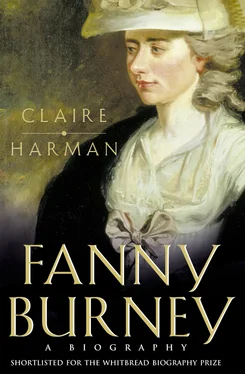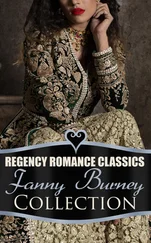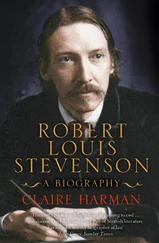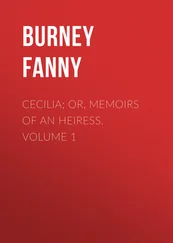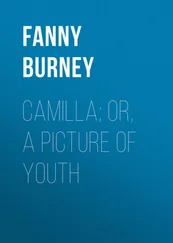If Fanny was trying to make enough money from Evelina to bail out her brother, she failed, even though the twenty guineas she received from the publisher for the copyright seemed ‘a sum enormous’ to her at the time. She said later that she had given the proceeds of her first novel to her brother Charles, but his disgrace at university post-dates her rush to finish Evelina . Perhaps even at Charterhouse, where he stayed until the late age of nineteen, Charles had run into the kind of debt that seems to have burdened him as a student. It is even possible that he might have been desperate (from whatever cause) to the point of attempting suicide. There is a cryptic reference in Fanny’s diary to a conversation with the writer Giuseppe Baretti in 1788, when Baretti used the image of ‘running a dagger into your own breast’. This made Fanny shudder, ‘because the dagger was a word of unfortunate recollection’. 22 * Is it possible, as Mrs Thrale heard on the grapevine the same year, 24 that Charles Burney junior was the model for the suicidal Macartney in Evelina , whom the heroine (later revealed to be his half-sister) discovers preparing to use a pistol on himself? The heroines of Cecilia, Camilla and The Wanderer undergo traumatic encounters with potential suicides too, and in each case the desperado is brandishing a weapon. There may have been something more painful behind her ‘decision to print’ than Fanny Burney was prepared to let anyone know.
By the winter of 1776, Fanny had completed the first two volumes of her novel and had copied out at least one volume in the feigned, upright hand she developed to prevent recognition of the author of the manuscript. This was not as neurotic as it might seem. Fanny’s handwriting was well known in the London printing shops from her extensive copying of her father’s works, and as she would have no control over the production of her novel – should a publisher take it up – there was a real risk that her cover would be blown, or worse, that her father might be disgraced by association with the book.
The task of transcribing her text into the unnatural handwriting was irksome, and by Christmas 1776 she was losing patience with it. In conspiracy with Susan, Charlotte and Charles she had already approached the bookseller James Dodsley, but he had refused to consider an anonymous work. The next bookseller she fixed on was Thomas Lowndes, whose premises were in Fleet Street. Fanny felt she couldn’t approach him directly, so using the Orange Coffee House in the Haymarket as a decoy address, she sent Charles as go-between, weirdly dressed up by his sisters to look as adult as possible and melodramatically concealed behind the pseudonym ‘Mr King’. Fanny herself became the work’s anonymous and genderless ‘editor’, writing to Lowndes, ‘I have in my possession a M:S. novel, which has never yet been seen but by myself.’ 25 She hoped to have the first two volumes ‘printed immediately’, with two more appearing later if they were successful. This might have been desirable to the young author, fed up with the slog of transcribing her half-completed manuscript and keen for cash; but Lowndes, unsurprisingly, wanted the thing complete. He returned volume one via ‘Mr King’, hoping to see the rest by the summer of 1777, but Fanny did not complete the book until November, staying up ‘the greatest part of many Nights, in order to get it ready’, 26 and it was not published until January of the following year. For one who claims to have had a ‘vague’ desire ‘to see her works in print’, it was an arduous process, requiring hard work, determination, patience and concentration.
The manuscript that finally found its way to Lowndes’s shop late in 1777 was prefaced with three layers of anxious authorial disclaimer: first there was an ode dedicating the work to the ‘author of my being’ (Dr Burney) and explaining that anonymity was the only course open to one who ‘cannot raise, but would not sink’ the fame of a matchless parent; then there was a petition for clemency ‘to the Authors of the Monthly and Critical Reviews’, entreating them to remember that ‘you were all young writers once’. Lastly there was a preface from ‘the editor’ of the book, admitting that though novels (with a few notable exceptions) were held in low regard, ‘surely all attempts to contribute to the number of those which may be read, if not with advantage, at least without injury, might rather be encouraged than contemned’. Apparently forgetting the role of ‘editor’, she declared an intention not to copy the style of ‘the great writers’ (Johnson, Rousseau, Richardson, Fielding, Smollett and Marivaux) or to deal with ‘the same ground which they have tracked’. She is of ‘the vulgar herd’, and they ‘great’. Another reason why Fanny Burney’s novel was unlikely to fit into the existing ‘great’ tradition was that she was female, but since the title page did not even feature the conventional anonymous credit ‘By a Lady’, that fact was hidden.
The novel tells the story of a seventeen-year-old girl, beautiful – of course – virtuous and naive, whose sheltered upbringing in Dorset under the protection of an elderly cleric, Mr Villars, is brought to an abrupt end by her entrance into London society in the company of aristocratic acquaintance. Villars is an anxious guardian: Evelina’s grandfather, his former pupil, met an early death after a disastrous marriage to a ‘lowbred and illiberal’ serving-woman, having bequeathed the care of his baby daughter, Caroline Evelyn, to the old tutor. When the girl grew up, her reprobate mother, remarried and called Madame Duval, reclaimed her, but their subsequent life together in Paris was miserable. Caroline escaped into a hasty marriage to a profligate Englishman, Sir John Belmont, who abandoned his pregnant wife, destroying their marriage certificate and denying any connection with her. She died giving birth to a daughter, Evelina Anville, a surname invented by Mr Villars to cover the baby’s unacknowledged parentage.
The eventual restoration of Evelina to her rightful name and identity, and the parallel story of her troubled courtship by courtly Lord Orville, provide the double framework within which Fanny Burney creates a vivid satire of eighteenth-century manners, told, for the first time, from a feminine viewpoint. The love story of Evelina is entertainingly perverse: as in Pride and Prejudice (which owes a great deal – possibly including its title * – to Burney’s work), the couple start out by meeting at an assembly and getting on very badly. Endless accidents and misconceptions make Orville’s poor opinion of Evelina, ‘a poor weak girl!’, 28 fall even further, and only through the passage of time, painfully good behaviour and the couple’s persistent sexual attraction to each other are they eventually united.
Burney packed her ‘little narrative’ with matter, rather in the way that Dickens was to do a century later. There are sentimental scenes, ‘sublime’ scenes (notably the tear-jerking reconciliation between Evelina and her repentant father, Sir John Belmont), high drama, low comedy and a large cast of characters catering for all tastes. A great deal of the book’s novelty and charm, however, comes from the sympathetic way in which Burney depicts the heroine’s youth and inexperience. The scene at Evelina’s first assembly is both funny and painful, for she is concentrating too hard on the formalities to behave any way other than idiotically. Her letters home to Dorset chart this frustrating ‘entrance into the world’ with an endearing candour that also performs an important ironic function: the reader sees (almost) all Evelina’s troubles coming long before she does, from the manoeuvrings of her intemperate grandmother Madame Duval, to the dangerously plausible Sir Clement Willoughby’s persistent attempts at seduction.
Читать дальше
